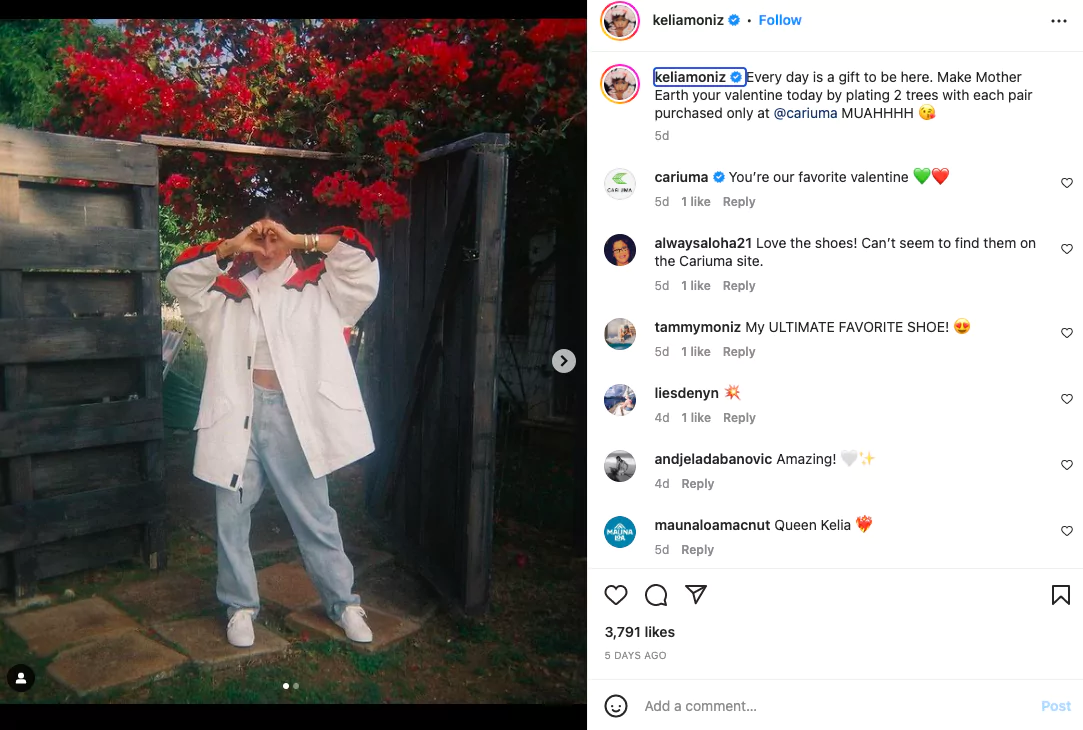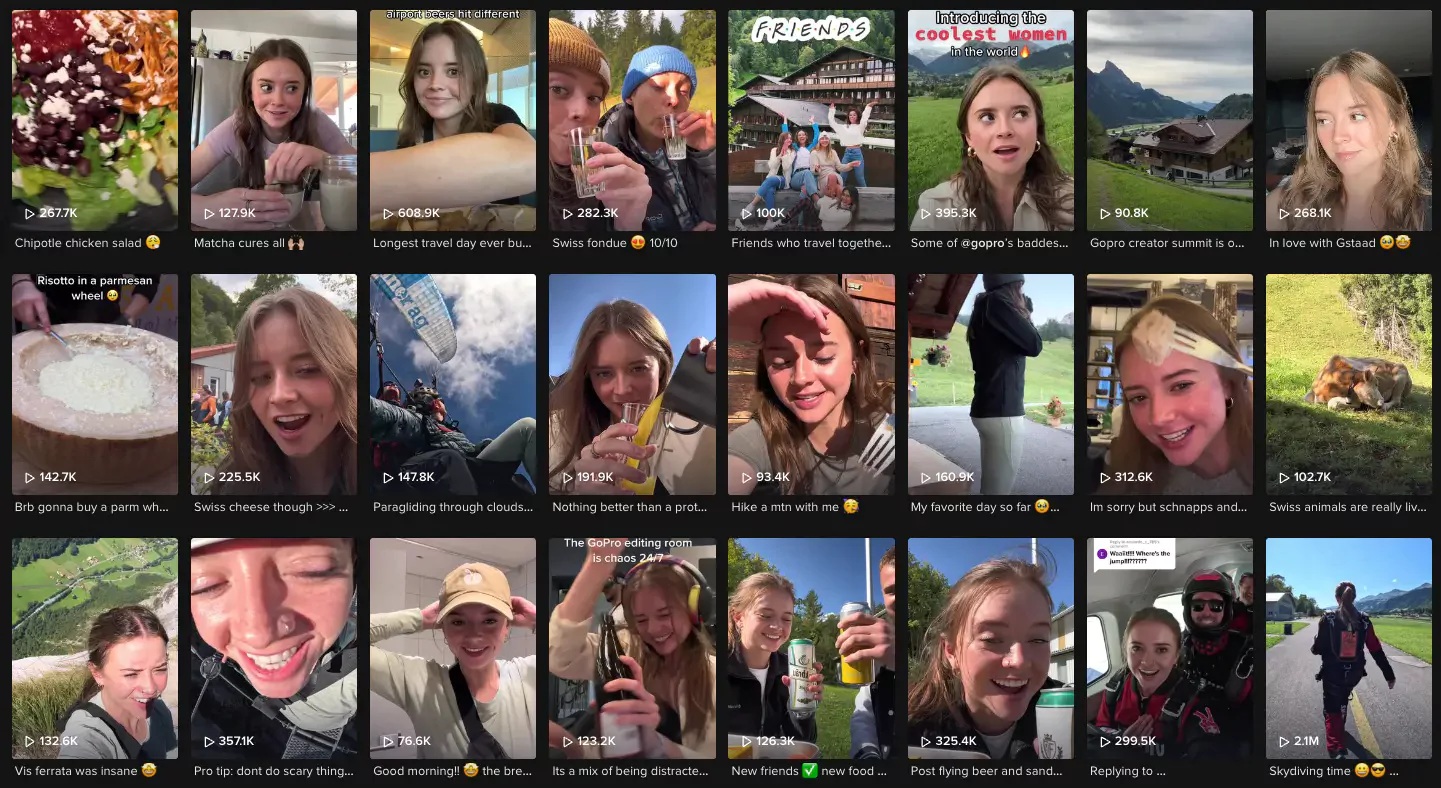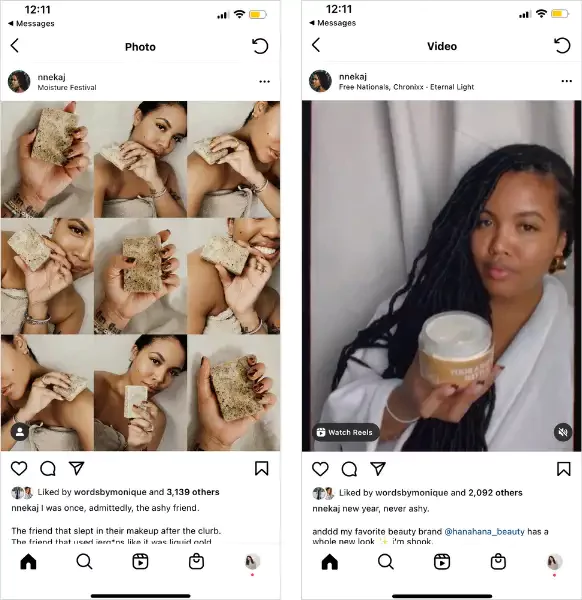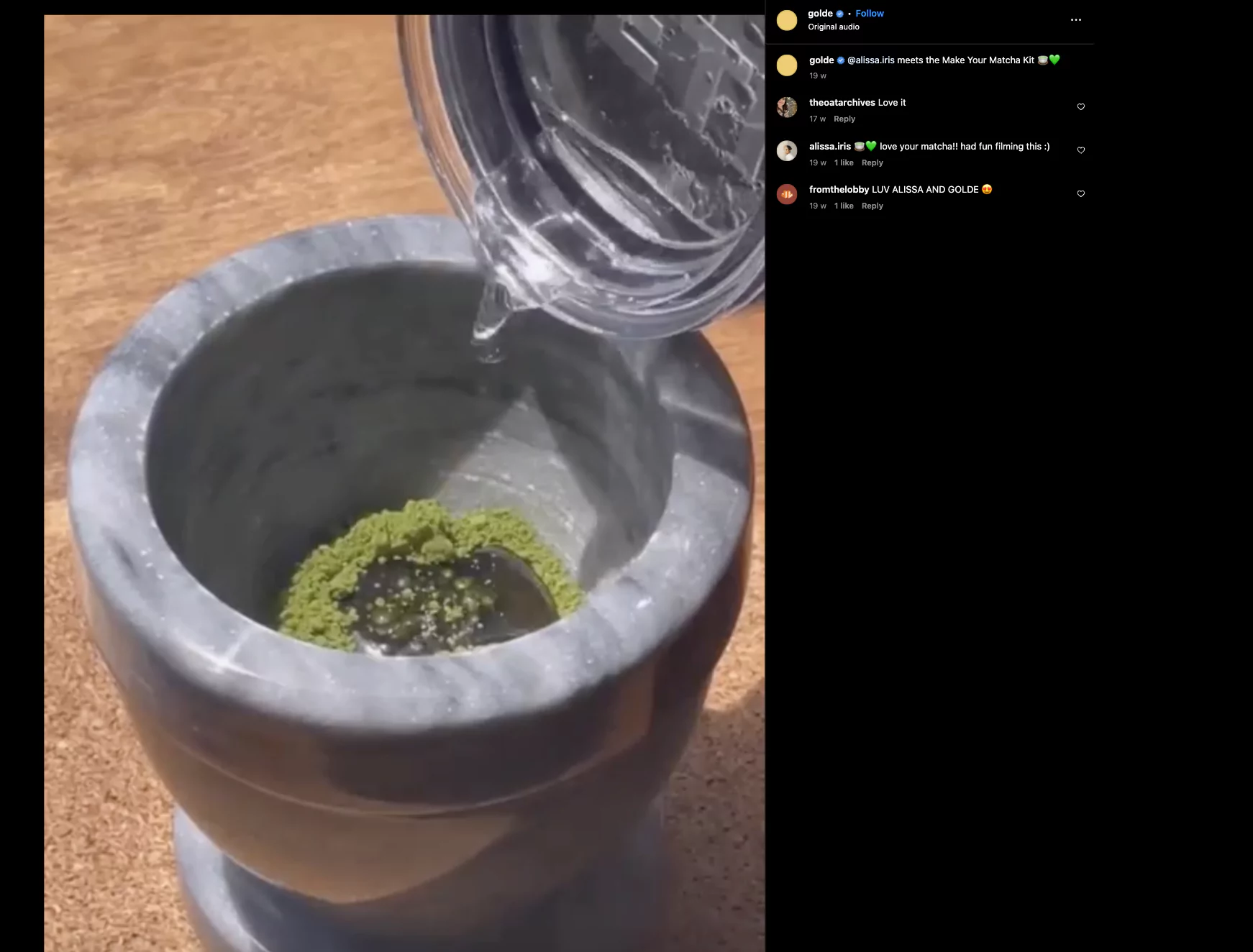Social influencers are true celebrities in the realm of Ecommerce marketing. They have the power to influence the buying decisions of their community, which makes influencer marketing a powerful, non-negotiable marketing tool for thriving DTC Ecommerce brands. Add to that the average time spent on social media rising worldwide, collaborating with the right influencer can help you run profitable brand campaigns and drive sales.
According to the Influencer Marketing Hub’s 2023 Benchmark Report’s influencer marketing statistics, over 83% of marketers believe influencer marketing to be one of the most effective marketing tools and 67% of them intend to increase their annual budget for the same.

But before diving into the details of what exactly is influencer marketing and how to set up an influencer marketing strategy, let’s start by answering the question, “why influencer marketing for Ecommerce and DTC brands”. If your definitive answers to this question include increasing brand awareness, building trust among your prospective customers, and driving traffic to your website and therefore sales, then you’ve already built a case for adding this indispensable tool to your marketing arsenal.
Who are influencers and what is influencer marketing?
An influencer is someone who influences others’ behavior and decisions. In the marketing context, influencers have the knowledge, authority, position, or relationship with their audience, which they develop through active engagement on their respective social media platforms. This influence gives them the power to affect their audience or their community’s lifestyle choices and buying decisions.
Influencers collaborate with DTC and ecommerce brands to endorse products or services to their social media community. This form of social media marketing is called ecommerce influencer marketing. It involves product placements from influencers with domain knowledge or social influence in their niche through different types of sponsored content, such as Instagram posts, tweets, blog posts, YouTube videos, and more.
Actionable stepwise guide to influencer marketing in Ecommerce
Step 1: How to find the right influencers for your brand
Honestly, not everyone can sell your product or service. The first step to building a winning influencer marketing strategy for your Ecommerce brand is finding the right influencers.
The following pointers will guide you on leveraging influencer marketing for higher conversions.
1) Define, understand, and align your target audience:
If you have more than one product or service, you’ll have more than one set of audiences to target. For example, if you are a sports apparel brand, your audience will vary based on the type of sport. Once you’ve understood the target audience and the demography you want to sell to, look for influencers who either have authority in the niche you’re in or have the reach with a big social following that meets the criteria as your target audience.
GK Elite, a gymnastics apparel brand, partners with top athletes, such as Simone Biles, as its influencers to promote its products. Simone’s gymnastics background ensures that her followers will be interested in GK Elite’s products.

2) Consider their niche:
An organic extension to aligning your audience with a prospective influencer’s community is to see if their niche aligns with your brand, products, or services. For example, if you are a skincare brand, the best way to increase your brand awareness among your target audience is by collaborating with beauty influencers. The fate of your ecommerce influencer marketing strategy and campaigns depends entirely on their relevance to your target audience.
However, it’s important here to keep in mind that you’re not looking for a sales pitch or a boring ad that the influencer’s audience doesn’t care about. What you’re looking for is a natural placement of your product with a convincing statement about why or how their audience will benefit from your product. Here the influencer’s authority comes from their experience in their niche.
Instagram beauty influencer @doeneseya partners with skincare brands, such as Juice Beauty, to endorse their products through video demonstrations showing her using the products.

3) Analyze their engagement rate:
To ascertain if your Instagram influencer marketing for ecommerce would be successful and make the impact you’d like to see (website traffic, engagement, and conversions) it is necessary to assess the influencer’s performance and their capacity to drive their audience to your brand.
Analyzing an influencer’s engagement rate in terms of how many followers they have, the number of likes or comments they get for their posts, the sentiment of the audience expressed through the comments, and other metrics can give you confidence in choosing to work with a specific influencer.
Working with an influencer with a low engagement rate is a wasted opportunity because a part of your campaign’s success depends on the influencer’s ability to engage their audience with the content they create on your brand’s behalf. This is where you can also weed out influencers with fake followers. Another thing to keep in mind is the average engagement rate differs with each social media platform.

Influencer marketing tools for Instagram like Keyhole can give you influencer engagement rate data, detailed profile analytics, and hashtag tracking to establish transparency.
4) Check their social media content:
Taking a look at an influencer’s social media content can give you an overview of whether their content aligns with your brand identity, values, and image.
For example, if you’re an ethical and sustainable footwear brand trying to reach conscious customers, you’d want to partner with influencers whose social media content is a reflection of their sustainable, environment-friendly habits. The Brazilian sneaker brand Cariuma sets a good example with its Instagram influencer partnerships.

For starters, follow the influencer you’re considering and understand their content. Do their interests, distinctive personality, tone of voice, aesthetics, values, and the type of paid or sponsored content they post appear consistent with their followers’ expectations and your brand’s vision and value proposition? These factors will help you drive your ecommerce influencer marketing strategy for Instagram.
5) Consider their authenticity:
The truth when it comes to social media influencer marketing for ecommerce is that only if an influencer sounds authentic can their audience trust them enough to engage with your brand.
If it appears that they talk about a product only because they’re paid to do so, their product recommendations for your brand stand the risk of having the same fate. Other than the influencer’s endorsement not appearing genuine, the association with such an influencer will reflect poorly on your brand image too.
This is also a crucial step that can help you avoid potential PR crises because working with influencers (especially the wrong ones) doesn’t come without risks. Checking influencers’ authenticity is akin to looking for any red flags and warning signs before getting into any legally binding contracts. It’s best to avoid associating influencers with past controversies and those who don’t have a positive association with their online audience.
6) Review their past brand collaborations:
Has the influencer partnered with similar brands as yours in the past? Did they work with a competitor? How did those collaborations perform in terms of engagement and other influencer marketing statistics? The answers to these questions and influence marketing KPI will give you an idea about how well a particular influencer aligns with your brand and their capability to recommend and promote your product or services. Tapping into their previous campaigns is also a good indicator of their authenticity and the genuineness of their audience.
Step 2: Social media platforms and their role in influencer marketing
If there’s one thing that the rising popularity of social media platforms indicates, it’s that influencer marketing is also on an upward trajectory. However, when it comes to influencer marketing in ecommerce, one size doesn’t fit all. Having refined goals, an understanding of the target audience and which social media channels they’re most active on, and accordingly opting for the right platform to run your influencer marketing campaign can lead to exceptional results.
According to a report on key influencer marketing statistics, 79% of brands consider Instagram the most important platform for them. The report also sheds insights into the effectiveness of influencer marketing for top brands on different channels. While Zara was the most mentioned brand on Instagram, Netflix got the most mentions on TikTok. Other popular social media platforms, including YouTube and Twitter, are also viable and effective influencer marketing options depending on the type of campaign you want to run.

Step 3: Understanding influencer metrics and how to track campaign success

Data does the talking when it comes to tracking and measuring the success of your social media influencer marketing campaign. To justify the campaign spending, marketing teams must quantify the results and achievements.
A few ways in which you can judge a campaign for social media influencer marketing for DTC ecommerce include the following:
- Using affiliate links — paired with a link in bio tool, it can provide fast and easy access to followers
- Tracking impressions
- Tracking engagement
- Monitoring traffic before, during, and after the campaign
- Creating promo codes and tracking sales to check how many customers used those codes at checkout
- Adding UTM (urchin tracking module) parameters to track campaign-specific traffic
- Determining influencer marketing KPI (improving website traffic, increasing lead generation, and reaching new audiences are a few to consider)
Step 4: The ethics of influencer marketing and avoiding potential pitfalls
Trust is at the foundation of influencer marketing. Unethical practices by either the brand or the influencer not only rock that foundation but also erode customers’ trust in the overall influencer marketing industry.
Two of the most common areas where Ecommerce and DTC brands tend to slip in terms of ethics are:
- Trying to control the influencer’s voice and using or
- Reusing the influencer’s content without permission.
However, not all influencers are influential either. Setting up best practices before you start spending on your ecommerce influencer marketing efforts can help you avoid potential pitfalls, including falling for influencers with fake followers or those with questionable values and character.
Some of the steps you can take to avoid these pitfalls and being unethical at your end are:
- Outline and stick to your brand’s ethical principles
- Ensure influencers use clear disclosures for every type of sponsored content.
- Add a legal disclosure policy in your partnership terms
- Ensure influencers follow your brand guidelines without being too controlling
- Work with authentic influencers who are honest about their opinions and vet their content
Step 5: Influencer marketing campaign best practices to maximize your ROI
We’ve put together a list of Ecommerce influencer marketing best practices to help you revisit the fundamentals, partner with the best influencers for your DTC business, and develop meaningful relationships with influencers and your audience.
Define the goal of your campaign – Align on how your influencer marketing plan fits into your broader social media marketing strategy. Are you trying to increase brand awareness, website traffic, or engagement?
As per a survey, over 35% of brands use influencer marketing to reach new customers, another 31% to increase product consideration, and only 26% to drive sales.

Understand the rules – While creating your influencer marketing strategy, it is important to understand the rules that your country follows as they may vary slightly by country. For example, in the United States, the rules come from the FTC (Federal Trade Commission).

Customize your outreach – For instance, when you are vetting the perfect Ecommerce influencers on Instagram, be authentic in sharing why you feel the influencer would be a great fit for your brand.
Trust them – Don’t forget that influencers know their audience better than you do. Remember that you’ve hired them for a reason, let them create authentic work for your influencer marketing campaign. Find a balance between giving them guidelines and brand details.
Proof: GoPro sent 42 creators on a trip to Interlaken, Switzerland without any content obligations for its GoPro Creator Summit. The results were as thrilling as the content.

Set guidelines – Set guidelines such as mentioning your brand in the caption, tagging your brand’s social media accounts, branded and hashtag campaigns, disclosing that the post is sponsored, discount codes, or calls-to-action. Setting guidelines can help both your brand and the influencer achieve campaign goals and success.
Track back your results – As with any strategy, you’d want to measure how much engagement the campaign receives and calculate the impact on your bottom line. UTM parameters help you track the visitors the influencer sends back to your website. Assign each influencer their own unique links with UTM codes to get a clear picture of the results.
Step 6: Engage with micro influencers
Micro influencer marketing is great for businesses who want to reach a more niche audience as they typically have between 1,000-10,000 followers. Unlike their mega influencer counterparts, they come off as more approachable and relatable.
For example, Milan-based influencer @sonnitranquilli has perfected her feed with skincare and beauty reviews and gets impressive engagement on her posts.

Due to the authenticity of the content by micro influencers, it feels as if it’s coming from a friend and not a celebrity endorsement.
What are the benefits of micro influencer marketing for DTC and Ecommerce businesses?
1) They are typically more cost-effective – Chances are that micro influencers are cost-effective and may even be ready to work with you on an ongoing basis.
For a product launch, consider working with a handful of micro influencers so that you can reach out to multiple communities and voices, the way skincare beauty brand Hannah Beauty does.

2) They have a more targeted audience – Especially if you are looking to tap into a niche community and increase your brand’s social exposure, micro influencers are the best choice as they talk about one or two topics which allow them to grow on social media. In addition to this, their ability to connect with their followers leads to an overwhelmingly positive response.
3) High engagement – Micro influencers have steady engagement rates, supportive communities, more authentic voice, and better performing user generated content.
Step 7: Incorporating influencer marketing into your overall marketing strategy
The benefits of influencer marketing are not limited to the awareness stage of a brand’s marketing funnel. It has an impact on every other stage, including consideration, conversion, and loyalty, which makes it a great inclusion to your overall marketing strategy. As described in the AdParlor influencer marketing KPIs guide, as a first step, determine your goals and KPIs, then set a budget to find out the payment structure that aligns with your goals. You’ll need a big budget for partnering with a celebrity influencer, whereas, micro and nano influencers will require a relatively lower spend. Alternatively, if you’re weighing your options between affiliate vs influencer marketing, ecommerce brands can benefit from both these marketing models.
Step 8: How to increase the ROI of your influencer marketing campaigns
There are two ways to look at the ROI from your influencer marketing campaigns.
- The first is through quantitative data, which includes the KPIs that you can track and analyze.
- The second is qualitative data in the form of earned media value (EMV) or influencer media value (IMV), which has become more recognized as a good measure of ROI in recent years with 83% of brands favoring the measure.
The best practices to get deep insights into your campaign’s ROI to maximize it in future influencer marketing efforts include analyzing campaign metrics and data at different levels, such as the social media level, campaign level, influencer level, and content level.
Best tools for influencer marketing
1) Grin

Grin‘s all-in-one influencer marketing platform helps Ecommerce DTC businesses build more authentic relationships with influencers.
The key features of Grin for an effective influencer marketing campaign are:
- AI-powered search and analysis – Loaded with social listening, email sequences, and features of a CRM, Grin allows DTC brands to run high-performance influencer campaigns and drive revenue.
- Streamlines campaign creation – Grin lets you create briefs, send proposals, track produced content, and organize every aspect of your social media influencer marketing for Ecommerce over a centralized dashboard.
- Reporting and analytics – Equipped with influencer marketing metrics and ROI at program, campaign, and individual levels, you can take data-backed decisions.
2) Gatsby
Best Tool for influencer marketing – Gatsby
For social media marketing managers or influencer marketing managers at agencies, Gatsby, a fully connected influencer CRM, helps grow and manage Instagram and TikTok communities at scale.
The key features of Gatsby for Ecommerce influencer marketing are:
- Social listening – Track Instagram stories, posts, and Reels where your brand is mentioned.
- TikTok tracking – Find, measure, and track your TikTok hashtag campaigns.
- DM auto-replies – Automate sending of DMs, emails, and SMS to influencers to invite them for collaborations.
3) #paid
paid is an easy platform for any brand looking to build influencer marketing campaigns, be it DTC, agencies, or enterprise companies. Going by the reviews, brands can launch their campaigns within minutes instead of days by using this Instagram marketing tool.

The key features of the Instagram marketing tool #paid for DTC and Ecommerce tool are:
- Get paired with influencers who love your brand to build awareness and drive ROAS.
- Automate your workflow including negotiating, contracting, payments, and legal using #paid.
4) Keyhole
One of the oldest influencer marketing tools, Keyhole allows you to measure and optimize your influencer marketing KPIs with analytics data. Let go of spreadsheets to manage influencers and bring in fool-proof marketing campaign results.

The key features of the influencer marketing platform Keyhole are:
- Influencer tracking – Hashtag tracking helps you find relevant and engaging influencers in your industry and get detailed reports about fake followers, negative sentiment, and so on.
- Automated reporting and optimization – Share and download comprehensive reports for access to real-time data.
- Optimization recommendations to scale your campaigns – Aggregate different influencer accounts into your campaign reports and collect performance data regarding your influencer campaigns and UGC to have a full picture of your Ecommerce influencer marketing strategy.
Future trends and innovations in influencer marketing
The increasing popularity and demand for influencers across industries, especially among DTC Ecommerce brands, makes it vital to keep up with these upcoming influencer marketing trends. They will shape the future of how businesses engage with their customers.
1) Micro-influencer networks:
It’s always more valuable to have a few customers who love your brand than many followers for whom you’re just another business. The same ideology applies to micro-influencers. They don’t have millions of followers to boast about like their celebrity counterparts, but they have a more engaged audience thanks to their relatability as someone from the audience’s peer group. This year, DTC brands are choosing to tap into a network of micro-influencers over investing in a few big influencers to have a wider reach and a more engaged audience.

2) Interactive and immersive experiences:
While augmented and virtual reality (AR and VR) are revolutionizing the tech world, they’re also the future of influencer marketing, becoming mainstream media much faster than anyone anticipated. DTC brands will adopt these technologies to merge the physical world with the digital in its true sense. These interactive and immersive technologies give customers the ability to visualize what a product will be like in their homes or have a shared experience in real-time with the influencer they like, leading to more trust and engagement with the brand.
3) Ongoing partnerships and collaborations:
This Instagram influencer marketing trend was spotted in 202 and we predict will continue growing in 2023. Instead of posting a one-off video, post or Reel, influencers will partner with brands on an ongoing basis.
Let’s take the example of TikTok influencer Tashi whose love for SPF brand Supergoop is visible throughout her sponsored content posts.
What’s more, she uses Supergoop’s products in non-sponsored posts, making the partnership feel more authentic and adding a level of legitimacy. Lastly, investing in long-term relationships is a win-win for both parties, plus it drives sales.

4) The rise of UGC creators:
As per Forbes, over 86% of companies use user generated content as a part of their overall marketing strategy. For all positive reasons, UGC is seen as more trustworthy than branded advertising, it builds credibility for your brand, and adds more variety to your business page.
A major influencer marketing trend we’re witnessing for 2023 is the rise of UGC content creators who specialize in creating UGC-inspired content for brands. This trend is popular with both aspiring and seasoned influencers. Going forward, this trend will become as valuable as traditional partnerships in increasing sales and traffic.

Conclusion
If you thought influencer marketing is big, it’s only going to get bigger in the coming years. To stay relevant and create more impact than the competition, your ecommerce DTC must keep up with future trends and bring innovations to your influencer marketing strategy.
You may also like
Essential resources for your success


























































